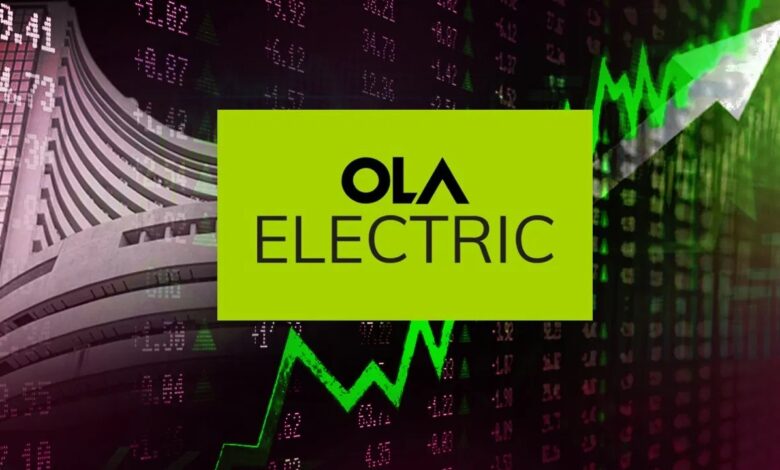Should You Hold or Sell Ola Electric Shares After Bhavish Aggarwal’s Latest Debacle?

Let’s get straight to the point: If you still own Ola Electric shares, sell them now. Bhavish Aggarwal, Ola’s CEO, has consistently shown that he’s more interested in feeding his ego than in ensuring his company’s success. His toxic leadership and reckless decisions are slowly driving Ola into the ground. The recent public spat with comedian Kunal Kamra, which wiped out ₹3,500 crore in market value in a single day, is just the latest in a long line of blunders. But let’s dig deeper into why Ola is headed for disaster.
A History of Arrogance and Ignorance
Bhavish Aggarwal’s track record over the last eight years is a masterclass in how not to run a company. From Ola Cabs to Ola Electric, and even Krutrim AI, his leadership has been marked by arrogance, impulsiveness, and a blatant disregard for the market’s feedback. Rather than taking responsibility for his failures, Aggarwal doubles down on his poor decisions and refuses to listen to criticism. This has been particularly evident in Ola’s frequent product launches, which have been rushed to market without proper testing, leading to a barrage of customer complaints.
Despite these failures, Aggarwal continues to plow ahead with zero humility. In 2018, Ola Cabs faced widespread driver protests over unfair wages and working conditions. Instead of addressing these legitimate concerns, Aggarwal turned a blind eye, allowing Uber to gain significant ground in India. He repeated this same reckless behavior with Ola Electric, where the company has been slammed with 80,000 complaints per month—and that number is only increasing.
The Twitter Spat That Cost ₹3,500 Crore
The Kunal Kamra debacle epitomizes Bhavish Aggarwal’s impulsive and emotionally driven leadership. Rather than handling customer feedback with grace, Aggarwal lashed out publicly. The result? A ₹3,500 crore loss in market value in just one day. If a single tweet can trigger such a massive collapse, it raises serious red flags about how fragile Ola’s stock is under Aggarwal’s mismanagement.
This is not the first time Bhavish has shown poor judgment on a public platform. He has a habit of treating criticism as a personal attack rather than an opportunity to improve his business. His childish clap-backs on Twitter have cost shareholders dearly, and there’s no sign that he’s learned from this mistake.
Ola Electric: A Disaster in the Making
Ola Electric is a catastrophe, plain and simple. The company’s failure to prioritize research and development has resulted in electric scooters that are not only unreliable but outright dangerous. There have been numerous reports of Ola Electric scooters catching fire, leading to accidents, injuries, and even deaths. Yet, instead of recalling the scooters or making any tangible effort to rectify these life-threatening issues, Bhavish Aggarwal is too busy launching his next big failure.
The 80,000 complaints per month reflect the company’s negligence toward both product safety and customer satisfaction. This alone should be enough to convince any rational investor to jump ship. If a company can’t get the basics right—like making sure its products don’t explode—then what future does it really have? While Ola might have initially been a promising name in the EV space, its inability to deliver a safe, reliable product has shattered its reputation beyond repair.
Bhavish Aggarwal: A Toxic Leader
Aggarwal’s toxic leadership extends beyond public disputes and failed products. Former employees have described the workplace culture at Ola as hostile and oppressive. Stories of Aggarwal humiliating staff, making employees run laps for mistakes, and creating a climate of fear are rampant. Instead of nurturing innovation, Aggarwal stifles it with his erratic behavior, making Ola a deeply unpleasant place to work.
Such a culture is unsustainable. Talented employees will continue to leave, and without top-tier talent, how does Ola expect to compete in an already cutthroat market? It’s no surprise that Ola Cabs, which was once a leading player in the ride-hailing industry, has seen its market share dwindle, losing ground to competitors like Uber. The same fate seems inevitable for Ola Electric unless Aggarwal changes course—something that seems highly unlikely given his history.
The Krutrim AI Disaster
Let’s not forget Krutrim AI, yet another one of Aggarwal’s failed ventures. Touted as a cutting-edge AI company, Krutrim never took off the way it was supposed to. The AI industry is one that thrives on innovation and cutting-edge technology, but Krutrim has failed to deliver on both fronts. Like his other ventures, Aggarwal launched Krutrim with great fanfare, only for the company to fall flat due to lack of focus and direction.
This lack of foresight and innovation is not new for Aggarwal. The fact that he has spread himself thin across multiple ventures without ensuring any of them are fully realized shows a complete lack of strategic vision. If Krutrim AI is anything to go by, investors should have zero faith in his ability to steer Ola Electric or any of his other businesses toward long-term success.
Manipulating the Public Through Paid Influencers
In a further blow to the company’s credibility, it has come to light that Ola Electric allegedly paid influencers to tweet positively about its products. If Bhavish Aggarwal had any confidence in the quality of his scooters or his company, why would he need to pay influencers to hype them up? This reveals a deep insecurity in the product, and worse, a desperate attempt to cover up its flaws.
Rather than investing in R&D or addressing the thousands of complaints coming in each month, Aggarwal has chosen to manipulate public perception. This tactic might buy him some time in the short term, but it’s a strategy doomed to fail. Sooner or later, the truth about the company’s myriad failures will become undeniable.
Competitive Pressure and the Endgame
Aggarwal’s mismanagement has also left Ola Electric vulnerable to competition from companies like Bajaj EV, Ather, and Hero Electric—all of which are much more customer-friendly and better equipped to handle the demands of the electric vehicle market. These companies have invested heavily in R&D, ensuring their products are both safe and reliable, something Ola Electric has sorely failed to do.
With such stiff competition, Ola is rapidly losing ground, and it’s only a matter of time before it becomes irrelevant in the EV space. While Ather and Bajaj continue to innovate and earn customer trust, Ola Electric is sinking under the weight of its complaints, faulty products, and Aggarwal’s toxic leadership.
Conclusion: Sell Before It’s Too Late
Bhavish Aggarwal’s leadership is a ticking time bomb, and it’s only a matter of time before it completely destroys Ola Electric. With a track record of failed ventures, reckless public behavior, and a toxic work environment, there is no future for a company under such disastrous management. 80,000 complaints per month, ongoing safety concerns, and competition from more competent players are all signs that Ola Electric is headed for a crash.
If you still hold shares in Ola Electric, the only rational choice is to sell them immediately before they hit rock bottom. Bhavish Aggarwal’s downfall isn’t coming—it’s already happening.




